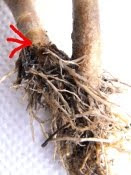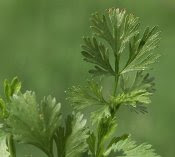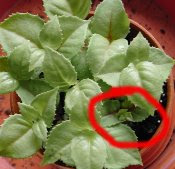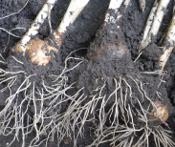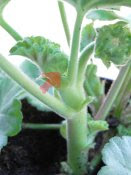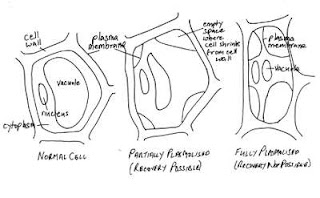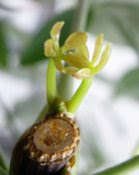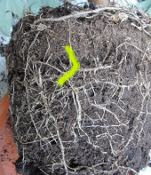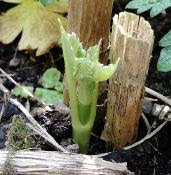- poor quality plants
- wrong weather conditions
- wrong time of day
- poor watering technique
- feeding at wrong time
- wrong feed
- poor after-care
POOR QUALITY PLANTS
They say one cannot make a 'silk purse out of a sow's ear'. How true. Start with good strong plants, avoiding:
- end-of-line bargains (unless you know you're doing)
- plants which do not look healthy (leaves should be unblemished and uniformally green)
- dehydrated plants (leaves should be erect, not limp)
- weeds growing in pot
WRONG WEATHER CONDITIONS
Visit a garden centre during a spell of rainy weather and it will be devoid of customers. Some gardeners are like those couples in ornamental weather houses - you know, the ones attached to catgut who only venture out when the weather is about to turn dry and sunny. Yet a prolonged spell of overcast, showery weather provides near perfect conditions for planting, especially if the soil has received sufficient water to get down a foot or two.
Work with the weather if you can. Choose an overcast day, then rush out and plant between the showers - it pays dividends (if you can avoid contracting pneumonia)
If the weather is too hot and rain is forecast, delay planting till then. Have everything prepared. And DON'T FORGET THAT HOT, CLEAR WEATHER OFTEN MEANS OVERNIGHT GROUND FROST, so cover plants at night with horticultural fleece till they are hardened off (fleece is also good for shading from sun)
WRONG TIME OF DAY
Humans being humans, we cannot resist rushing out in the burning mid-day sun to put our plants in the ground, as if we are somehow doing them a favour. No! No! No! Plants are averse to burning sun and even to heat. The best time to plant is at the end of the day, preferably when rain forecast (you will need to watch out for slugs). This was covered last year in 'Resisting the Heat'.
POOR WATERING TECHNIQUE
Most of this has been covered elsewhere (click 'starters' link at side). But what I want to tell you is this:
- As much water should be given to your plants BEFORE planting as possible. This is not generally understood.
- No matter how careful you are, there will always be some impairment to root functioning caused by the disturbance.
- Also, roots need air around them to function well. So waterlogged soil is no use.
Therefore, give your plants a good soaking at least four hours before planting. This will give time for enough water to be taken up to sustain establishment after planting, and also to allow any excess water to drain away from around the roots, thereby allowing them to function well right from the off.
Make sure the ground is thoroughly wetted, down to at least 30cm (1 foot), if possible. As I have told you elsewhere, dry ground is notoriously difficult to wet. Make sure any water you apply does not run away through cracks in the soil, or even run off the soil surface.
After Planting
Preferably do not apply water; otherwise, give a good dousing. Then refrain from watering as long as possible (even to wilting point). Plants can sense moisture levels; as these diminish they send out roots to look for it. If water is given too early, the roots become lazy and do not develop, consequently leaving the plants more drought-susceptible.
Beware of panning or puddling the soil surface, especially on clay or silt soils in hot sunny weather. This mud dries hard and seals out air vital for root development. If this happens, allow to dry, then break up the hard surface.
Ongoing Watering
DO NOT WATER ON A DAILY BASIS. Leave the soil to dry out for at least a few days. As water is taken up by the plants, air is drawn down to the roots to take its place. Repeated soaking followed by drying encourages a good root system (remember the geranium?). As a rough guide, let surface dry out down to about 5cm (2 inches) between waterings, then apply 5 litres per square metre. A fine watering rose and gentle pressure should be used.
FEEDING
DO NOT APPLY ANY FEED WHATSOEVER at this stage. There is no way of knowing how much feed is already in the compost; there is also no knowing whether or not dry weather will return.
PLANTING TECHNIQUE
Gently firm plants into loose soil with knuckles, so they are adequately supported. Do not apply too much pressure, try to avoid damaging roots and do not handle by stems or leaves. Watch out for slugs and frost.
P.S. Most of the above has already been dealt with in the earlier posts of last year. It's worth having a look.








